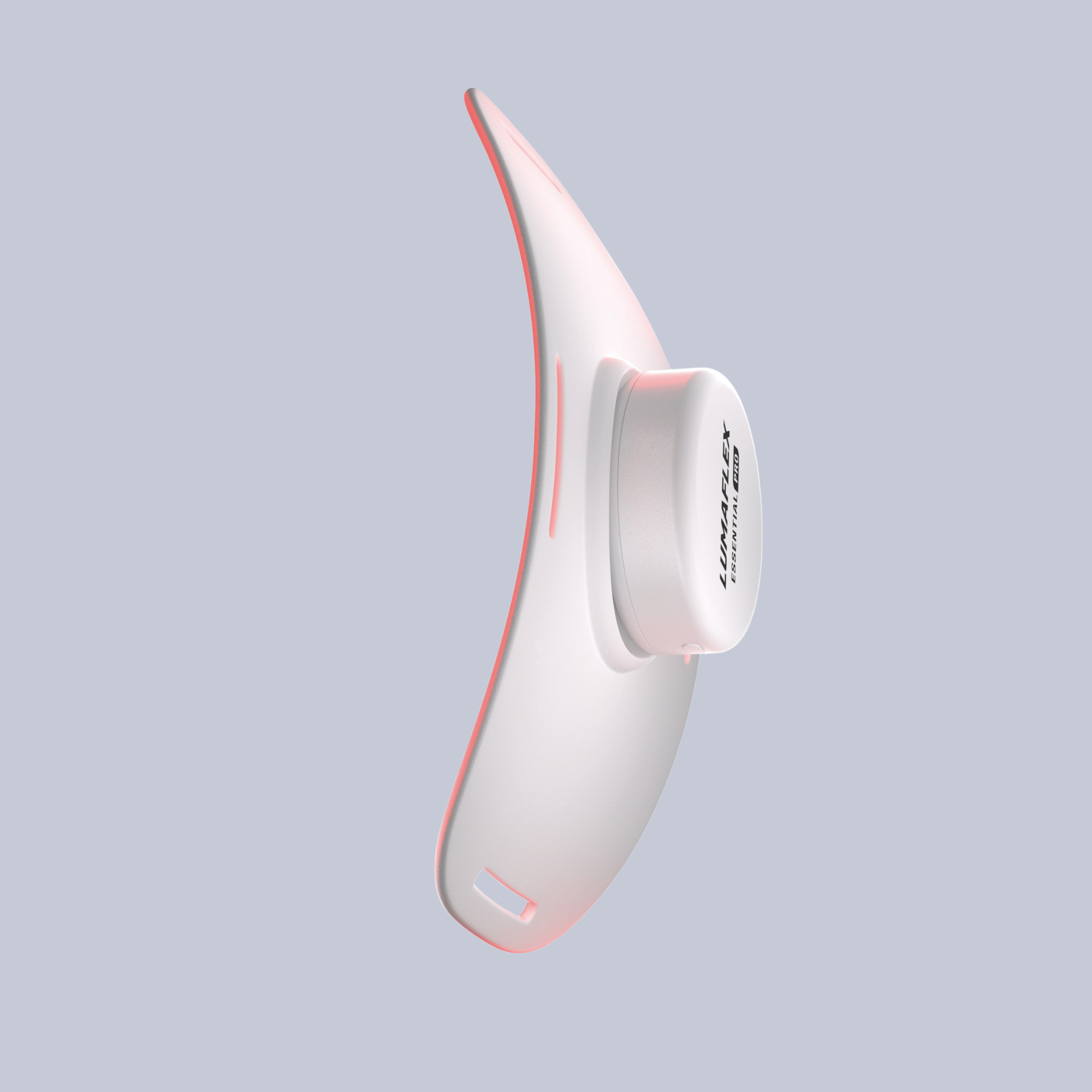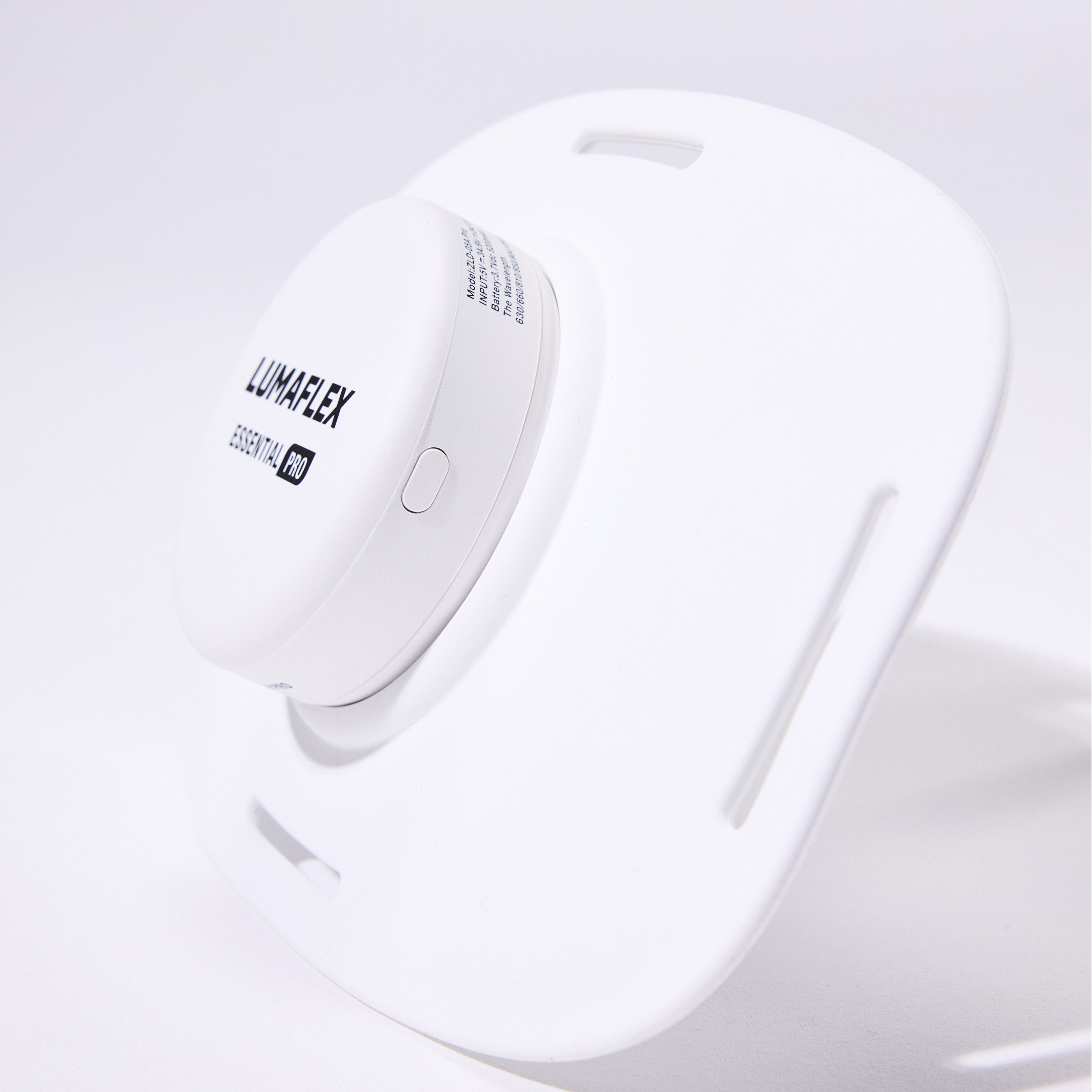Carpal Tunnel or Arthritis? Symptoms, Causes & Treatment
Is My Wrist Pain Carpal Tunnel or Arthritis?

Hand and wrist pain can feel the same whether it comes from carpal tunnel or arthritis. Both cause stiffness, discomfort, and limited movement, but the conditions are very different.
Knowing the difference is important because treatment for carpal tunnel is not the same as treatment for arthritis. A correct diagnosis helps you recover faster and avoid long-term damage.
This guide will help you understand the difference between carpal tunnel and arthritis, so you know what steps to take for relief. You will learn the symptoms, causes, and treatment options, including natural approaches like medical-grade red light therapy devices for pain relief and recovery.
Table of contents
What is Carpal Tunnel Syndrome? Symptoms and Risks
Carpal tunnel syndrome occurs when the median nerve in the wrist is compressed. This nerve runs through a small passage called the carpal tunnel, which is surrounded by bones and ligaments. When the space narrows or becomes irritated, the nerve is squeezed and symptoms appear.
Common signs of carpal tunnel syndrome include:
- Tingling or numbness in the thumb, index, or middle fingers
- Weakness in the hand or difficulty gripping objects
- Pain or burning that may extend up the forearm
- “Pins and needles” sensation, especially at night
- Symptoms that worsen with repetitive hand use
Risk factors include repetitive wrist movements, poor ergonomic setup, pregnancy, and health conditions such as diabetes. Early recognition makes treatment easier and can help prevent long-term nerve damage.

What is Arthritis in the Hands and Wrists?
Arthritis is a condition that causes inflammation and damage in the joints. Unlike carpal tunnel syndrome, which affects a nerve, arthritis targets the cartilage and bones where two joints meet. Over time, this leads to stiffness, pain, and reduced mobility.
There are different types of arthritis, but the two most common in the hands and wrists are:
- Osteoarthritis: caused by wear and tear of the joints over time.
- Rheumatoid arthritis: an autoimmune condition where the immune system attacks healthy joint tissue.
Common symptoms of arthritis in the hands and wrists include:
- Stiffness, especially in the morning or after inactivity
- Swelling around the joints
- Pain that worsens with movement or after heavy use
- A grinding or clicking feeling in the joints
- Gradual loss of flexibility and strength
Arthritis develops gradually and often affects multiple joints, making it different from the more localized symptoms of carpal tunnel syndrome.

Carpal Tunnel vs Arthritis Symptoms: Key Differences
If you are wondering whether your hand pain is carpal tunnel or arthritis, the symptoms can feel similar at first, but their symptoms have key differences. Understanding these differences can help you describe your pain more clearly to a doctor and guide you toward the right treatment.
Carpal Tunnel vs Arthritis Symptoms
| Feature | Carpal Tunnel Syndrome | Arthritis (Hands & Wrists) |
|---|---|---|
| Type of Problem | Nerve compression (median nerve) | Joint inflammation & cartilage damage |
| Pain Location | Wrist, palm, thumb, index, and middle fingers | Multiple joints in the hands and wrists |
| Common Symptoms | Tingling, numbness, “pins and needles,” burning sensation | Stiffness, swelling, grinding or clicking joints |
| When Symptoms Worsen | At night, with repetitive hand use (typing, gripping, gaming) | In the morning or after long periods of inactivity |
| Other Signs | Weak grip, dropping objects, pain radiating up the forearm | Gradual loss of flexibility and joint strength |
| Progression | Symptoms may come and go, worsen with strain | Symptoms develop slowly and worsen over time |
If your pain feels more like tingling and numbness, carpal tunnel may be the cause. If stiffness and swelling are your main issues, arthritis may be more likely. However, only a healthcare provider can confirm which condition you have.
Causes and Risk Factors of Carpal Tunnel or Arthritis
Many people ask, “Is it carpal tunnel or arthritis causing my pain?” Looking at the causes and risk factors can help tell them apart. Knowing the causes can help you reduce your risk and protect long-term joint health.
Causes and Risk Factors: Carpal Tunnel vs Arthritis
| Factor | Carpal Tunnel Syndrome | Arthritis (Hands & Wrists) |
|---|---|---|
| Main Cause | Compression of the median nerve in the wrist | Inflammation and breakdown of joint tissue |
| Risk from Repetition | Typing, assembly line work, gaming, repetitive wrist motion | Repetitive joint strain may worsen existing arthritis |
| Health Conditions | Diabetes, thyroid disorders, obesity, pregnancy-related swelling | Autoimmune conditions (rheumatoid arthritis), history of joint disease |
| Age Factor | More common in adults who perform repetitive tasks | Risk increases with age, especially after 40 |
| Injury Link | Prior wrist injury or fracture can narrow the carpal tunnel | Past joint injuries increase likelihood of arthritis later |
| Genetics | Family history plays a minor role | Strong family history link, especially for rheumatoid arthritis |
Carpal tunnel is primarily a nerve compression issue, while arthritis is an inflammatory joint disease. However, some people may experience both, which makes diagnosis especially important.
Diagnosis: How to Tell Carpal Tunnel from Arthritis
If you are unsure whether your pain is carpal tunnel or arthritis, a clear diagnosis from a healthcare provider is the only way to know for sure. A healthcare provider will ask about your symptoms, medical history, and daily activities, then perform tests to narrow it down.
How Carpal Tunnel Is Diagnosed
- Physical exam: checking for tingling, numbness, and grip weakness
- Tinel’s test or Phalen’s test: wrist movements that trigger symptoms
- Nerve conduction studies: measure how well signals travel through the median nerve
- Electromyography (EMG): detects nerve or muscle damage
How Arthritis Is Diagnosed
- Physical exam: checking for swelling, stiffness, and joint tenderness
- X-rays or MRI scans: show cartilage loss, bone spurs, or joint inflammation
- Blood tests: look for markers of rheumatoid arthritis or inflammation
A doctor may also order additional imaging if both conditions are suspected. Early diagnosis is key, since treatment plans differ, and addressing symptoms quickly can prevent long-term damage.

Treatment Options for Carpal Tunnel and Arthritis
Treatment depends on whether your pain is due to carpal tunnel or arthritis, since each condition requires a different management plan.
| Approach | Carpal Tunnel Syndrome | Arthritis (Hands & Wrists) |
|---|---|---|
| Lifestyle Adjustments | Ergonomic changes, taking breaks from repetitive motion | Joint protection strategies, gentle daily movement |
| Support Devices | Wrist splints (especially at night) | Braces or supports for affected joints |
| Medication | Anti-inflammatory drugs, pain relievers, steroid injections | Pain relievers, NSAIDs, corticosteroid or biologic injections |
| Therapies | Physical therapy, stretching, nerve-gliding exercises | Physical therapy, heat/cold therapy, mobility exercises |
| Surgical Options | Carpal tunnel release surgery in severe cases | Joint repair, fusion, or replacement surgery in advanced cases |
| Natural Support | Medical-grade red light therapy devices for pain, ergonomic workspace setup | Medical-grade red light therapy devices for pain, anti-inflammatory diet, supplements |
Red light therapy is non-invasive and can be used at home, making it an appealing option for people seeking natural pain relief alongside medical care.
When to See a Doctor for Carpal Tunnel or Arthritis Pain
While mild pain in the hands or wrists may improve with rest and lifestyle changes, there are times when professional care is essential. Ignoring symptoms can lead to permanent nerve or joint damage.
You should see a doctor if you experience:
- Numbness or tingling that does not go away
- Severe stiffness or swelling in the joints
- Weak grip strength or frequent dropping of objects
- Pain that wakes you at night or interferes with daily tasks
- Symptoms that continue for more than a few weeks despite home care
Getting help early increases the chances of successful treatment and may prevent the need for surgery. A healthcare provider can also confirm whether your pain is from carpal tunnel, arthritis, or a combination of both.
Self-Care Tips for Hand and Wrist Pain Relief
If you’ve been asking yourself whether your symptoms point to carpal tunnel or arthritis, the key is knowing the differences and working with your doctor on the right plan. Carpal tunnel is a nerve compression issue, while arthritis affects the joints, and each requires different care.
Along with medical treatment, self-care can make a big difference in daily comfort and recovery. Simple habits like taking breaks from repetitive tasks, stretching your hands and wrists, maintaining good posture, and applying hot or cold therapy can ease strain.
For people seeking natural support, medical-grade red light therapy devices for pain can be part of a holistic routine. Brands like Lumaflex use specific wavelengths of red and near-infrared light to reduce inflammation, improve circulation, and support the body’s healing process. All without drugs or surgery.
Whether you are dealing with carpal tunnel, arthritis, or both, combining medical guidance with consistent self-care gives you the best chance at long-term relief and stronger bone and joint health.
FAQs About Carpal Tunnel vs Arthritis
Can carpal tunnel and arthritis occur together?
Yes. Some people develop both carpal tunnel and arthritis in the wrist. Arthritis can increase swelling around the carpal tunnel, which may worsen nerve compression and symptoms.
What is the main difference between carpal tunnel and arthritis?
Carpal tunnel syndrome affects the median nerve, causing tingling and numbness. Arthritis affects the joints, leading to stiffness, swelling, and long-term joint damage.
How do doctors test for carpal tunnel vs arthritis?
Doctors use physical exams, nerve conduction studies, and EMG tests for carpal tunnel. For arthritis, imaging like X-rays or MRIs and blood tests are common.
What is the best natural treatment for wrist pain?
Supportive options include stretching, ergonomic adjustments, and medical-grade red light therapy devices for pain relief and recovery.
When should I see a doctor for hand or wrist pain?
If you have ongoing numbness, swelling, or pain that interferes with daily activities, see a doctor. Early diagnosis can prevent long-term damage.
Related Readings
- Medical-Grade Red Light Therapy Devices for Pain Relief
- Transcranial Photobiomodulation: Pain Relief & Healing
- Can Cartilage Regrow Naturally? Joint Health, Therapies & New Research
- Maximizing Your Black Friday: Red Light Therapy for Tendon Repair
- Red Light Therapy for Neuropathy: Pain Relief & Nerve Repair Guide
- Red Light Therapy for Nerve Repair: A Powerful Solution for Healing and Pain Relief
- Red Light Therapy: What Is It and How Does It Work for Neuropathy
- Red Light Therapy for Pain 101: Benefits and How It Works































